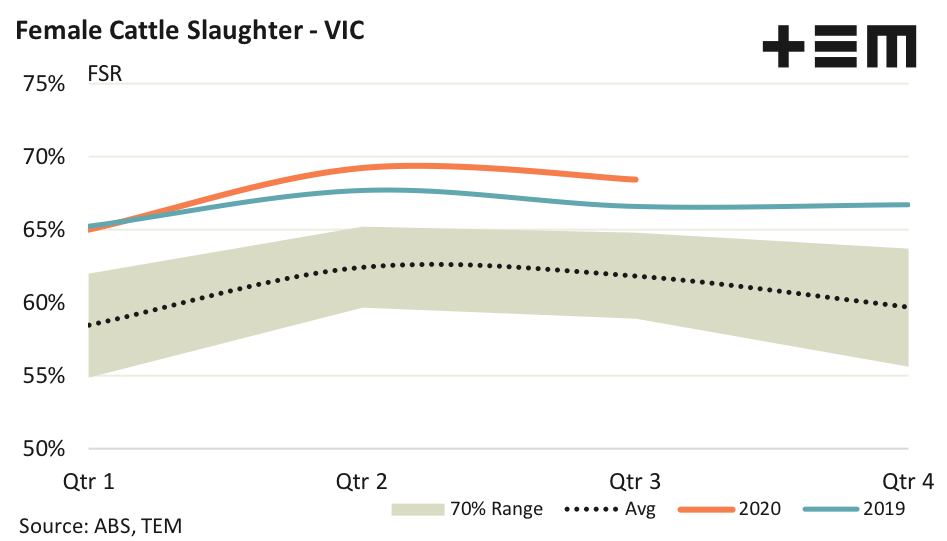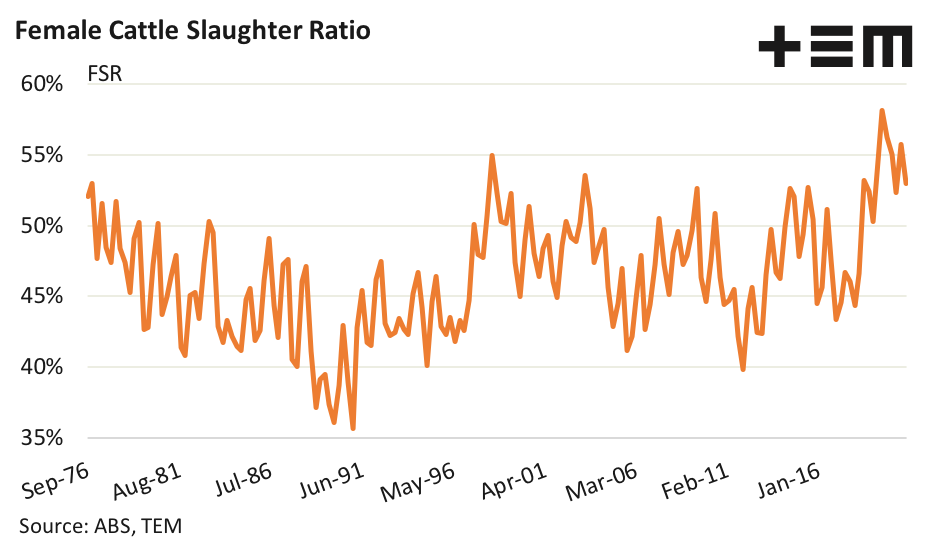Market Morsel: Is it dairy?

Market Morsel
In a recent AgWatchers podcast it was noted that there has been an increase in dairy farmers exiting the sector. Usually the historic annual average decline sits at around 4-5%. However, Dairy Australia analyst, John Droppert, noted the preliminary estimate of the exodus is closer to 10-11% for the current season.
The EP3 team have commented recently on the female cattle slaughter ratio (FSR) staying persistently high this season, despite the active restocking intent, so we wondered if the increased move out of dairy was behind the elevated FSR.
Victoria accounts for nearly 65% of national milk production so the dairy herd is highest here. Taking a look at the Victorian FSR this season we can see that the trend is definitely above the longer-term average pattern. Indeed the 2020 Victorian FSR is averaging 67.6% to the September quarter, compared to the five-year average of 60.9%. This suggests that with a doubling of the rate of exit from the dairy sector there could be something behind the idea that dairy is contributing to the higher national FSR.
Assuming the rate of dairy cow turnoff is matching the exodus of dairy farmers (i.e it has approximately doubled) this would mean that an extra 130,000 female cattle are being added to the calculation of the FSR. The current national FSR for the 2020 season sits at 53.7% (as at the end of September quarter). However, if we take off the additional 130,000 or so head of dairy cattle we would be at an FSR of 51.4% for the 2020 season.
An annual average national FSR of 51.4% would be the second highest level in over two decades and the fourth highest since the mid 1970s. So while the dairy exodus is likely adding to the current elevated FSR it doesn’t appear to be the main reason the female slaughter ratio is staying stubbornly high.


